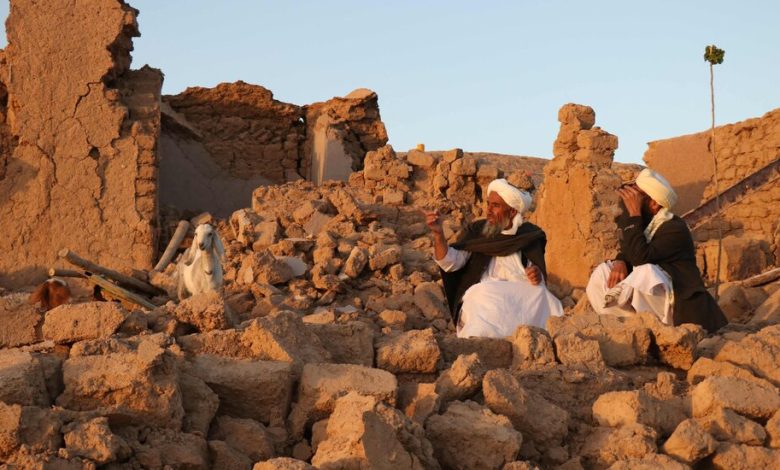Entire Villages Razed as Death Toll Soars From Quakes in Afghanistan

The death toll from two major earthquakes in northwestern Afghanistan rose to at least 813 people on Sunday, according to local authorities, making the dual shocks one of the deadliest natural disasters to hit the country in decades.
The two earthquakes, both 6.3 magnitude, hit Herat Province, along the country’s border with Iran, on Saturday, causing mud-brick homes in several districts to come crashing down and thousands of people in the province’s capital city to rush out of their houses and office buildings as the ground shook beneath them. At least seven tremors followed the initial quakes.
Taliban officials said that some villages had been razed and that the number of casualties was expected to rise as search and rescue efforts continued. Earlier on Sunday, officials mistakenly announced that around 2,000 people had been killed, but they later clarified that that figure included both those killed and those injured, according to the Ministry of Disaster Management.
Aid workers who arrived in the hardest hit areas on Sunday found scenes of devastation: Homes in villages had been reduced to rubble. Hospitals and clinics — already teetering on the brink of collapse because of shortfalls in funding — were overwhelmed with hundreds of injured people.
In the provincial capital, Herat City, thousands of people slept outside in frigid temperatures on Saturday night for fear of additional aftershocks that could bring their homes crashing down.
Abdullah Ansari, 27, was working at a sewing workshop in Herat City on an underground floor when the first quake hit, he said. He and his co-workers ran outside, some barefoot, and he quickly checked if everyone had made it out.
“I called my wife and asked about my sons,” he said, then asked her to leave their home. “There is a big building next to my house, and I was worried if it collapses, they might get killed.”
The earthquakes were the latest natural disaster to rattle Afghanistan, which has endured enormous floods, mudslides and earthquakes in recent years. In June 2022, a major earthquake struck southeastern Afghanistan and killed more 1,000 people, according to Taliban officials.
The twin shocks follow two other major quakes this year, in Turkey and Morocco, that killed tens of thousands of people combined.
The disasters have compounded the already dire humanitarian and economic crises that have engulfed Afghanistan since the Western-backed government collapsed two years ago, prompting millions of jobs to disappear practically overnight and the prices of basic goods to soar.
Today, nearly half of the country’s 39 million people face severe hunger, including around three million on the brink of starvation, according to the United Nations’ World Food Program.
Since the Taliban seized power in 2021, U.N. officials have said that Afghanistan represents the world’s largest humanitarian crisis. But two years into Taliban rule, aid money has begun to dry up as other crises have seized the world’s attention and the Taliban administration’s mounting restrictions on women have led to calls to cut off funding from the country entirely in response.
Now, as the country heads into the frigid winter months, the suffering is expected to worsen as families are forced to choose between spending the little money they have on food or on firewood to keep their families warm.
Najim Rahim and Safiullah Padshah contributed reporting.




